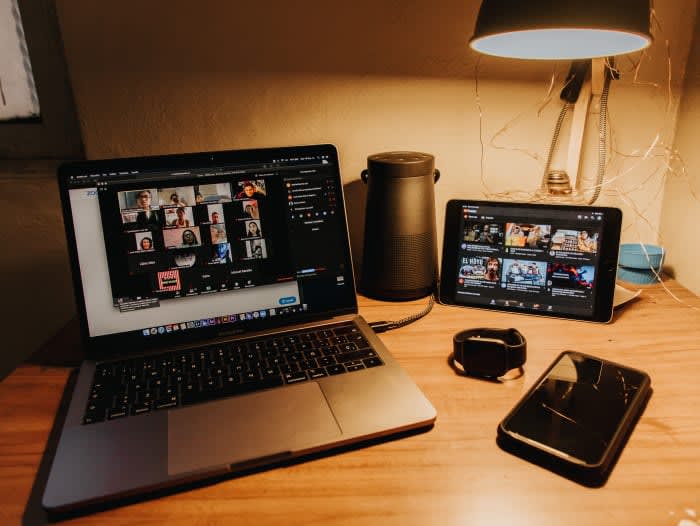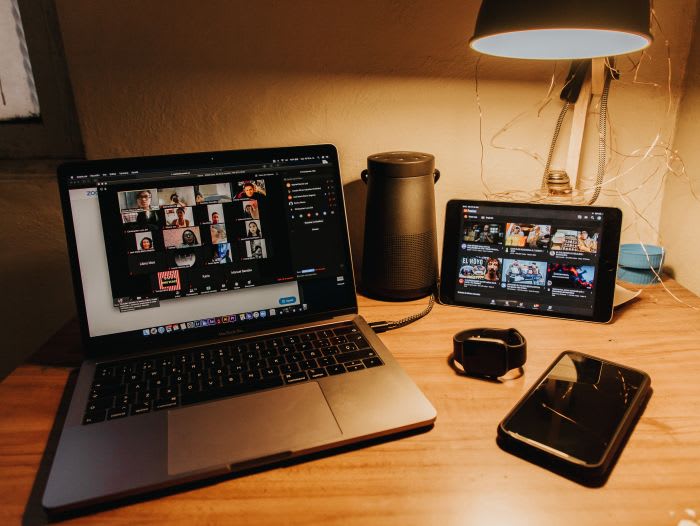Whether you’re working remotely out of the blue or you’ve been a remote team for many years, an important asset of your team is virtual meetings. And now that many teams are forced to work from home as a result of the Corona Virus, virtual meetings have become more important than ever.
From collaborating on projects to listening to your team members’ personal experiences, a lot of things happen over virtual meetings. How you plan and do yours could make a break for your distributed team. A high-quality virtual meeting is one that brings the highest value to the entire team and also makes every participant happy.
The question is, how do you achieve this high quality in your virtual meetings? While you may see it to be simple as just opening zoom or your favorite video meeting tool and starting, it actually takes more effort than this.

In this guide, you will learn the preliminaries you need to start, the tools that will make your virtual meeting feel like an in-person one, and how to moderate your meeting to achieve the best results.
Ready? Let’s get started.
Getting the needed tools for your virtual team meeting
Tools mean everything to your virtual meeting. While a lot of guides go straight to the software you need to use, this software won’t work well if you have a bad device. Among the hardware you need include:
- Your primary device: it could be your laptop, your phone, or tablet.
- Other devices such as a good microphone, especially noise-canceling ones are also important to make your virtual meeting a success
- A good internet connection
Then there is the software you need to run your meeting, be it a video or audio-only meeting. Today, there are a lot of tools for virtual meetings. While some have a specific purpose, others have two or more features that can serve different purposes. Here are some of the best tools you need to run a successful virtual meeting.
Krisp: background noise is very bad for any virtual meeting and Krisp helps you keep that away. With Krisp, you are able to mute all noise coming from the background and allow you and your team to enjoy a noise-free virtual meeting.
Zoom – a great video communication tool for any virtual meetings, from two people to hundreds. It allows you to make video and audio calls, share screens, and record your meeting if necessary.
Skype – Skype is another great tool that allows teams to make virtual meetings. It also has screen sharing and recording features.
GoToMeeting – another video conferencing software for teams of all sizes.
Join.Me – a video conferencing tool that allows you to host or join meetings, customize your background in case of video calls, and more.
Other great tools include Google Meet, UberConference, Appear. In, and many others.
Planning the virtual team meeting
Planning a virtual meeting is as important as having the meeting itself. Planning a virtual meeting involves a lot of things, including:
A set calendar: make sure each participant has the correct date. Also make sure that participants are okay with the time set, especially at a time when people work from different time zones.
Agenda planning: whether it’s a 10-minute update or a 1-hour detailed meeting, setting a meeting agenda is very important to achieving success with your virtual team. You don’t want to start a meeting and no specific thing is on the table for discussion after 30 minutes. Set your meeting agenda – and every participant should have the updates on what is going to be discussed. If certain participants have to contribute certain things to the meeting, they should be notified as well and should know what they’re supposed to do beforehand. Agendas help get virtual meetings on track and make sure your virtual team doesn’t waste time.
A notification system: meetings, although usually planned, can still elude your virtual team. Online calendar scheduling platforms usually have notifications 30 minutes before the meeting. However, if this isn’t possible on your side, you can always find a way to notify team members before a meeting.
Moderating your virtual team meeting
Like one-on-one meetings, virtual meetings need to be moderated if you want to have a fruitful meeting. Here’s how to do it.
Host/moderated: since there is a host for every virtual meeting, it’s usually good to make sure that they moderate the meeting or find someone to moderate whatever happens in the meeting.
Focus on the most important things: since you have an agenda down already, your virtual meeting should have important topics you want to treat. The moderator should help make sure that these topics are discussed so the team doesn’t deviate into talking about different things altogether. Of course, you can always chip in other things once your meeting is done.
The don’ts of a successful virtual meeting
- Too long: just like how long office meetings can be boring and get employees pissed, virtual meetings that are too long get employees bored at some point. Make meetings short, from 15 to 45 minutes. Unless it’s very necessary, don’t stretch a meeting up to 90 minutes.
- One-sided conversations: meetings are for every member of your remote team. While you might have someone to moderate proceedings, you shouldn’t make the meeting one-sided. People should be able to share their views on any topic being discussed. As for opinions and updates from team members, as well as let them add anything they think would be good, be it work-related or personal.
- Disrespect. Like how some employees in one-on-one meetings disrespect other people’s opinions, this can also happen in virtual meetings. Disrespect should not be tolerated in a virtual meeting.
- Don’t leave empty-handed: empty-handed hear is to leave a meeting without making any recommendations or coming up with the next steps. Always make sure that every meeting ends with some recommendations or the next steps.
What next for conducting a high-quality virtual meeting?
Virtual meetings are very important for remote teams to get work done. Virtual teams should use this guide to help them do high-quality virtual meetings.
Further Reading:




